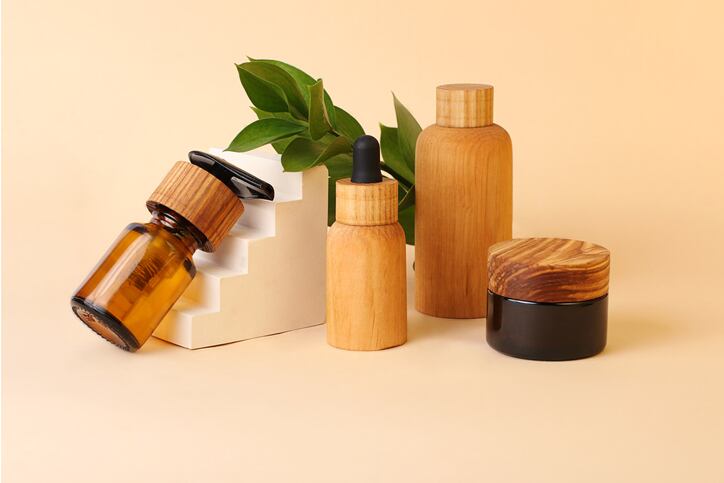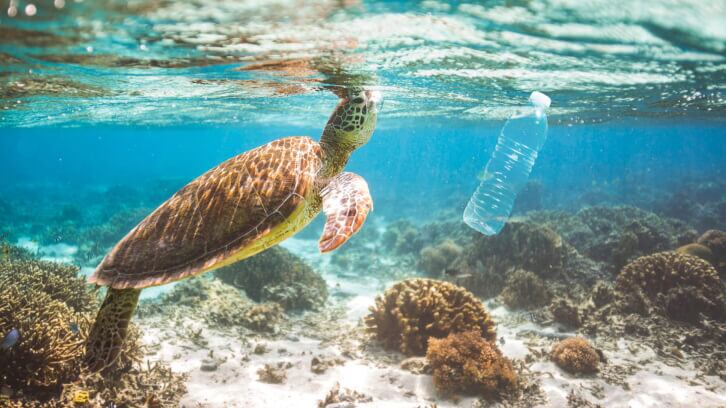In 2024, new packaging rules are set to come into force in the EU. The EU Packaging and Packaging Waste Regulation (PPWR), which aims at reducing packaging pollution and building a circular economy for packaging, has an overall objective to ensure all packs are designed for recycling by January 1st, 2030, and recyclable five years later.
Meanwhile, over in the UK there is a similar sustainable packaging initiative Extended Producer Responsibility (EPR), which has been delayed but is still set to be in force in 2025. Under these regulations, the financial contribution will need to be paid by brands for packaging they put on the market to cover the cost of collecting, sorting, and recycling.
While it appears that FMCG companies have been given plenty of time to prepare, the clock is ticking.
Beauty consumers’ appetite for new innovations and a constant flux of new and improved formulas are presenting a huge challenge when it comes to packaging sustainability.
According to Gillian Garside-Wight, consulting director at packaging sustainability consultancy Aura, this accelerated speed to market and frequent product evolution are at odds with the core principles of sustainability, while ‘luxury’ beauty products with high-end packaging aren’t helping redress the balance.
However, she said there is much more cosmetics brands can do to minimise their impact on the environment and satisfy consumers.
“It is about reinventing packaging and exploring new ways,” she said. “The whole industry is concerned and must work together to meet their engagements.”
Garside-Wight also said that in the UK, only 9% of cosmetics packaging is currently recycled and the rest is put into landfill. She points out that acknowledging the scale of the problem is the first step towards progress.
Many brands have turned to refillable rather than single-use cosmetic packaging solutions, but this is not a simple switch and needs careful consideration of materials and data.
There are also the potential health and safety issues that can arise if consumers are repeatedly refilling their own products at home, as recently noted by global packaging company Aptar at the Cosmetics 360 show.
Garside-Wight said that beauty and personal care brands are missing a golden opportunity to educate consumers on their packaging sustainability goals.
She noted how many focus on promoting cruelty-free, vegan-friendly, and responsibly sourced ingredients on the pack, but don’t bother communicating their packaging sustainability goals in this same space.
“Brands such as Upcircle Beauty are doing it right when it comes to driving packaging sustainability, actively encouraging consumers to return packaging for refilling and providing a 20% discount on their products,” she said.
Garside-Wight also notes the need for data-driven decision-making to help achieve these ecological packaging goals: “To avoid greenwashing, brands must have access to accurate, real-time packaging data across the entire supply chain, taking into account factors like recyclability, recycled content, waste reduction and shelf life,” she shared.
She continued: “Misleading claims and the complexity of recyclability in different regions highlight the importance of thoughtful design based on factual, live and accurate information, not presumption.”
She concluded by saying that even though recycling rates have increased in Europe in the last years, the amount of waste generated is growing faster than the actual recycling. “Without action, the EU would see an increase of 19% in packaging waste by 2030,” she said.
The daily mission of our development teams
While some beauty brands are still putting steps in place to start working on these targets, the packaging companies have needed to be ahead of the curve as their businesses depend on it.
The VP for CSR and Product Sustainability at luxury packaging company Albéa Cosmetics & Fragrance, Gilles Swyngedauw, said that Albéa has been working on responsible packaging solutions for more than 15 years.
“We are anticipating the new regulations, working with partners across the industry to establish common guidelines. Because in this long and complex journey, collaboration is key,” he said.
Swyngedauw shared that Albéa is currently working on a big project with Citeo in France, to make skin care and makeup packaging designed for recycling into existing recycling streams and potential future streams.
He also said that the company works with CEN, the European Committee for Standardisation, Recyclass in EU and APR in the US to develop D4RG (Design for Recycling Guidelines) and a single definition of ‘recyclability’.
It is also a member of SPICE, the Sustainable Packaging Initiative for Cosmetics, which was co-founded by L'Oréal and Quantis sustainable packaging consultancy and offers a specialist tool for businesses to use.
“Lowering the impact of our solutions is therefore the daily mission of our development teams,” shared Swyngedauw.
“At Albéa Cosmetics & Fragrance, reusing packaging is the most important issue and we are working on refillable jars, compacts or sticks. Reinventing packaging also means looking for more virtuous materials: a dedicated technical team is re-inventing ABS/SAN packaging to move away from these non-recyclable resins.”
The company also has an Albéa Tubes arm which is currently focusing on making the tubes recyclable. “At least 90% of the products in our portfolio have a recyclable solution and we are working on the remaining 10%. In addition to recyclability, the teams are also focusing on the reduction of material with lightweight solutions for sleeves and caps,” shared Swyngedauw.
He revealed that the integration of recycled content is also a key topic as the company is committed to incorporate 10% of PCR (Post-consumer recycled) in its solutions by 2025.
Our message is ‘not to panic’
Sustainability Champion at global cosmetics packaging company Quadpack Hulya Gray said that just like every other business in the industry, Quadpack is still working to gain clarity on the details of how to comply and integrate this in into its sustainability roadmap to transition and offer compliant products.
As Quadpack is a B Corp, sustainability already underpins the business and Gray said that NPD now focuses on eco-design, mono-material packaging, refill formats and sustainable materials.
“We are working to minimise the carbon footprint of our processes, by using renewable energy, regenerative systems and a biomass plant, she said. “We are also trying to deliver solutions close to our customers, to produce or stock, decorate and assemble locally. So, we’re already working towards a common goal.”
Gray also said that although Quadpack always encourages clients to select sustainable packaging for their products, it is still a tricky area to navigate. “We offer life-cycle assessments on the impact of our solutions to help them make informed choices, she explained.
“However, in terms of compliance, our message is not to panic. There is a lot to figure out, but the important part is that we've started the journey to make sure we take care of the planet for future generations.”





